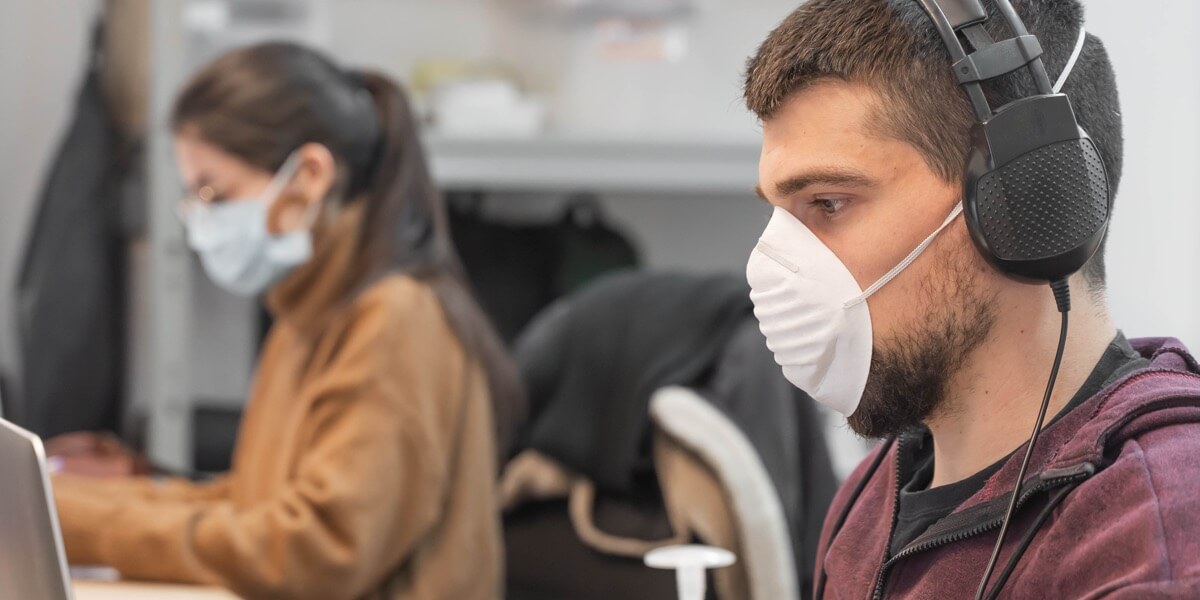During the COVID-19 crisis, HR teams have been put in the position of asking some employees to come to work while allowing others to stay at home. At some companies, the dynamic has only worsened tensions between remote workers and front-line staff. One senior HR consultant even used the word “bad blood” to describe what she’s seen play out over the last few weeks.
Operating during a pandemic doesn’t have to come at the expense of team unity. We asked HR and management experts to share how they're maintaining a sense of fairness and lessening workplace tensions.
1. Reward front-line employees.
In the midst of a pandemic, even the simple act of coming into work is going above and beyond. The worst thing organizations could do is shrug their shoulders and consider it just part of the job description.
“Many people feel it's not safe to open up the way several states are currently, and you're essentially asking your front-line workers to put themselves at risk. The answer to this is not the callous ‘If you don't like it, you can get another job’ approach, but rather showing appreciation for those willing to do this work,” said Dan Bailey, President of WikiLawn. That appreciation, according to Bailey, needs to amount to more than words.
Nearly every expert interviewed for this story recommended additional or “hazard” pay. Others handled the gesture with a one-time bonus. In neither case did remote employees report feeling slighted or jealous.
“Luckily for us, our office staff completely understands the fact that our technicians are out there risking their health. We’re all extremely supportive and doing our best to help them in any way we can remotely. In addition to taking every safety precaution, we’ve also supplied a bonus for them this entire period,” said Sean Nguyen, Director at Internet Advisor. Nguyen’s technicians help install residential and commercial internet equipment, literally powering the remote economy.
There’s another important reason why remote staff likely won’t cry foul. For many, especially working parents, there are remote-exclusive perks that help you even the score. “For our front-line production team we've provided a bonus for their continued hard work. For our remote team, we've provided them with flexibility within their day to handle being at home and homeschooling young ones. Both sides face their distinct set of challenges and recognizing them is crucial for creating a fair work environment,” said Ann Nihil, Operations and Culture Manager at Fracture.
2. Be clear and over-communicate.
Uncertainty breeds anxiety, and there’s a lot of both when it comes to reporting or returning to work during a pandemic. If you’re taking measures to keep onsite employees safe, make sure you spell those out. Are you reorganizing workspaces? Are you screening temperatures? These are the questions weighing on employees’ minds — and you’ll need answers to all of them so employees feel taken care of.
“I would say that the best tip for maintaining a sense of fairness in the workplace is to communicate openly with employees and give them all the details on why you’re taking steps you take, and the reasoning behind it,” said Dusan Goljic, founder of Deals On Health. If you’re running a survey on employees’ attitudes toward returning to work, remember to follow through with sharing those responses. If you had to deviate from their feedback for business reasons, be transparent about why. Your all-hands meetings provide you with a great avenue to go through reopening logistics and answer questions.
“The frequency, the intentionality, the empathy, just has to be at a higher level...That’s going to be huge in overcoming the so-called divide between those in the field and those in the office. You need to make sure that everyone feels like they’re being taken care of from a health, safety, and wellness standpoint,” said Chandler Bartsch, Talent Generalist at Indochino. Bartsch recently discussed her company’s reopening plans in a webinar hosted by Direct Agents.
3. Make culture initiatives inclusive.
Since the crisis began, HR teams have experimented with creative ways to keep employees connected. But even a virtual happy hour can do more harm than good when half of your employees aren’t invited. After years of struggling to include remote workers in team events, companies need to make sure the reverse doesn’t happen. No matter their roles, remember to let all employees in on the fun by including them in those virtual get-togethers. Doing so safely might mean letting employees participate from their workstations or smartphones, away from shared spaces.
Describing Fracture as an “all-collar” organization, Nihil knows firsthand how important it is to keep everyone united in times like these. “We’ve always promoted the ‘one team’ culture by creating team-building events that incorporate both our production and non-production team members. It’s been so crucial for us to make sure that there’s a sense of fairness for both sides of the house,” Nihil said.
Karen Oakey, the company’s Director of HR, agreed. Culture and engagement don’t suddenly lose their importance on the assembly floor. Even before the start of the pandemic, her team all had access to the same virtual outings, events, and resources, no matter their position. “A truly fair company culture has to be baked from many ingredients, including equitable policy, process, training, work environment, team building activities, and events. Consistently working to support open engagement across all teams organically results in an undivided culture,” Oakey said.
4. Don’t open the floodgates.
Field employees are already anxious about their health and safety — don’t exacerbate that by welcoming everyone back en masse to square the deal. Experts advised against opening your doors to anyone other than those who absolutely need to be there.
“For the people that are going into the office, the company is doing what it can to make sure they feel like it’s a safe environment for them to be in, including limiting the number of people in the office to 25% to provide for adequate social distancing measures, providing masks and disinfecting supplies, and asking people to self-report any symptoms they may be experiencing to help us with our tracking,” said Anita Lim-Fritz, Senior Director of People and Talent at Mythic. While some individuals might like working in the office, the priority right now for HR teams is worker safety, not personal preference.
If you need help justifying who needs to be there, turn back to your job descriptions for clarity. “Like many things in an organization, I think this goes back to the job description: What is essential about the work, and where can it possibly be done? Where is the essential work most effective? What are the risks and opportunities of transforming the role to adjust to moving it out of the office?” said Cody Bess, founder of Poprouser, an HR consultancy.
—
Planning your reopening? Learn what other professionals are doing by joining our community of over 8,000 HR leaders, Resources for Humans.







